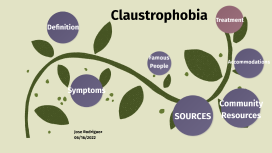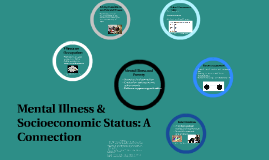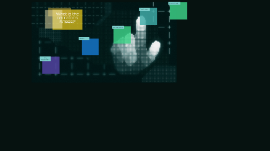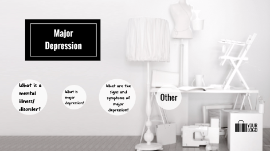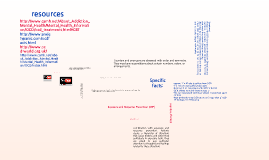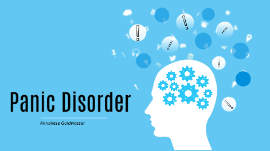Mental Illness Presentation
Transcript: What is the narrator's illness in Edgar Allen Poe's "The Tell Tale Heart"? My Hypothesis My Hypothesis My hypothesis of the narrator's disease in Edgar Allen Poe's "The Tell Tale Heart" is a combination of Phobia and Schizophrenia. Phobia Phobia Phobia is one type of some anxiety disorders, and is a very powerful aversion of an object, creature, or thing that presents little or no real threat ("Specific Phobias"). The narrator shows signs of phobia of the old man's "Vulture Eye." The narrator spends hours watching the old man at night stealthily using his lantern to shine only on the eye. After murdering the old man, he is happy that he will never see the evil eye again. Symptoms Most patients don't have the same phobia as others and not in the same amounts. Patients usually try to aviod their phobia, but if they can't get away from their phobia these symptoms occur: Trembling Shortness Of Breath A Strong Desire To Get Away Rapid Heartbeat Fear And/Or Panic ("Phobias") Symptoms Background Information Backround Information Phobias can be very specific, like the narrator's phobia of the old man's "Vulture Eye;" then there are more general phobias like spiders. (Ribeiro) Treatments Most patients can be cured of their phobia. These treatments include: Medicine Therapy Both ("Phobias") Treatments Extra Information Experiencing phobias may limit work efficiency, disrupt a relationship, disgruntle everyday life, and/or reduce self esteem. Some phobias begin in childhood and subside after a period of time. Some terrors in phobia may not make any sense, but patients feel helpless against it. ("Specific Phobias") Extra Information Schizophrenia Schizophrenia Schizophrenia is one of several critical brain illnesses. Some patients who have this illness may hear things that aren't there like voices. Patients may also experience a fear that others are trying to harm them ("Schizophrenia" MedlinePlus). The narrator admits to having an illness, and I believe that he is referring to schizophrenia. The main symptom is the narrator's hallucination of hearing the old man's heartbeat grow after the old man is dead. He even thinks the policemen can hear the heartbeat and are just messing with him by not speaking about it. This is paranoia and a delusion. Also, the narrator spends hours and hours just watching the old man and planning the murder. The narrator has no sense of real time or real life and uses violence to solve his problem. Symptoms Symptoms Symptoms of schizophrenia may vary per patient but they include: Hallucinations Movement Disorders Lack In Expressions Anosognosia ("Lack Of Insight") Violent Actions Thought Disorders Reduced happiness in daily pleasers Delusions Muddled Speech ("Schizophrenia" NAMI) (sawerhaq) Background Information Backround Information No one know for sure what causes schizophrenia, but researchers and scientists have associated schizophrenia to many feasible causes like the features of brain chemistry and construction, and environmental causes. Sadly, there is no singular, easy treatment has been found for this illness. But there are treament that over time help keep schizophrenia. ("Schizoprhrenia" NIMH) Treatments Treatments Though there is no cure for schizophrenia, there are possible treatments that will stabilize when the symptoms. Such as: Therapy Phycosocial Rehabilition Medication Synthesis Of All ("Schizophrenia" NAMI) Extra Information Schizophrenia can occasionally run in families. Researchers and scientists have confidence that several varying genes may expand the risk of schizophrenia. Scientsts also think that a lack of harmony in the brain may cause chemical reactions, creating schizophrenia. ("Schizophrenia" NIMH) Extra Information Conclusion Conclusion After researching various types of mental illnesses, I feel that my hypothesis is correct. The narrator shows both a phobia and Schizophrenia as he becomes obsessed with the old man's eye, uses violence to destroy the old man, and hallucinates the sound of the old man's heart beat. (Gonzales) Works Cited Works Cited Ribeiro, S. “Block 1...Tell-Tale Heart Summary.” Mr. Ribeiro's 8th Grade Language Arts Page, Weebly, 18 Oct. 2016, sribeiro8thgradelanguageartspage.weebly.com/reading-block-1/block-1tell-tale-heart-summary. sawerhaq. “The Tell-Tale Heart.” Www.glogster.com, Glogster, 2015, edu.glogster.com/glog/the-tell-tale-heart/28v8o2p8n9e?=glogpedia-source. Images Gonzales, George. “The Tell-Tale Heart - Edgar Allan Poe Book Design.” George Gonzalez, Adobe Publisher, 0AD, georgeg.myportfolio.com/the-tell-tale-heart-edgar-allan-poe-book-design. Information “Schizophrenia.” MedlinePlus, U.S. National Library of Medicine, 30 Apr. 2018, medlineplus.gov/schizophrenia.html. “Schizophrenia.” NAMI Southern Arizona, NAMIsa.org, Sept. 2016, www.namisa.org/uploads/5/0/7/8/5078292/schizophrenia_2016.pdf. “Phobias.” MedlinePlus, U.S. National Library of Medicine, 6 June 2018, medlineplus.gov/phobias.html. “Schizophrenia.” National Institute






